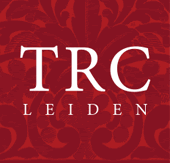What usually comes to mind when you are thinking of 1920s fashion? Is it women’s iconic fringed and sparkly flapper dresses? Short haircuts, headbands, chokers and high heeled shoes worn at lavish jazz parties?
While there may be some truth in these images, this exhibition gives a wider overview of the decade and explores some of these assumptions by comparing them with actual clothing from the period.
Fashion is eternally recycled. In every decade, specific features of previous “vintage” fashion will be taken up again and adapted to 'modern' taste. In fact, the end of the 1950s and the early 1960s were greatly inspired by the 1920s: youth culture, cloche hats, straight and short dresses, movies such as ‘Singing in the Rain’ which featured fringed flapper dresses, “the Swinging Sixties” vs. “The Roaring Twenties”, etc. This later imagining of the 1920s is one that still remains today, but is in fact only partially representative of the period.

Similarly, the lengths of skirts and dresses were also longer than we may think. Although women were more liberated than they had been before, a hemline under the knee was still the norm, even for the most lavish of parties.
Within the decade itself, fashionable length evolved from its shortest, just under the knees, in the mid 1920s to progressively coming back down to reach the ankles and feet again at the end of the decade. Even evening wear would not allow for bare knees and the only women who would show more leg were dancers or performers.
 TRC exhibition "The 1920s from head to toe: Fashion from 100 years ago". Photograph by author.The TRC’s wide-ranging collection of 1920s clothing does in fact illustrate the idea of a glamorous decade while adding onto that the more daily, simple clothing that someone going about everyday life would wear, or even the fashionable articles they would make themselves.
TRC exhibition "The 1920s from head to toe: Fashion from 100 years ago". Photograph by author.The TRC’s wide-ranging collection of 1920s clothing does in fact illustrate the idea of a glamorous decade while adding onto that the more daily, simple clothing that someone going about everyday life would wear, or even the fashionable articles they would make themselves.
Beaded evening dresses, simple printed garments, graphic geometric motifs, a whole range of accessories (hats, gloves, spectacles, shoes) and even sewing machines to make one’s own clothing, all take centre space in this online exhibition.
One notable feature of the decade is definitely a sharp turn from how fashion for women, and femininity, were considered. After World War One, a feeling of freedom, wealth and liberation changed the way in which women dressed. Women were also becoming an increasingly larger part of the workforce in the Western world and clothing reflected this need for practicality and use.
An interest in more active lifestyles and sports, radio programmes, films and film stars, the idea of modernity and inspiration from other cultures also led to specific features of fashion.
 TRC exhibition "The 1920s from head to toe: Fashion from 100 years ago". Photograph by author.Shorter haircuts, an emphasis on a more boyish body type, and straighter garment lines changed the way in which femininity was perceived and expressed through clothing. Practicality and comfort were new important aspects to consider. While a pear-shaped, tiny waisted, corseted and bosomy body ideal had been in vogue previously, the 1920s emphasised the idea of a modern, slender, boyish figure of a woman.
TRC exhibition "The 1920s from head to toe: Fashion from 100 years ago". Photograph by author.Shorter haircuts, an emphasis on a more boyish body type, and straighter garment lines changed the way in which femininity was perceived and expressed through clothing. Practicality and comfort were new important aspects to consider. While a pear-shaped, tiny waisted, corseted and bosomy body ideal had been in vogue previously, the 1920s emphasised the idea of a modern, slender, boyish figure of a woman.
Light underwear, rectangularly designed dresses, looser fabrics and shapes, separate pieces, see-through materials, open backs, low waistlines and shorter hemlines became common visual identifiers of this period of history.
This exhibition aims to showcase Western 1920s fashion in all of its forms and for all occasions. Follow along different situations and what people would have worn, from daily life to special evenings and the swimming pool.


